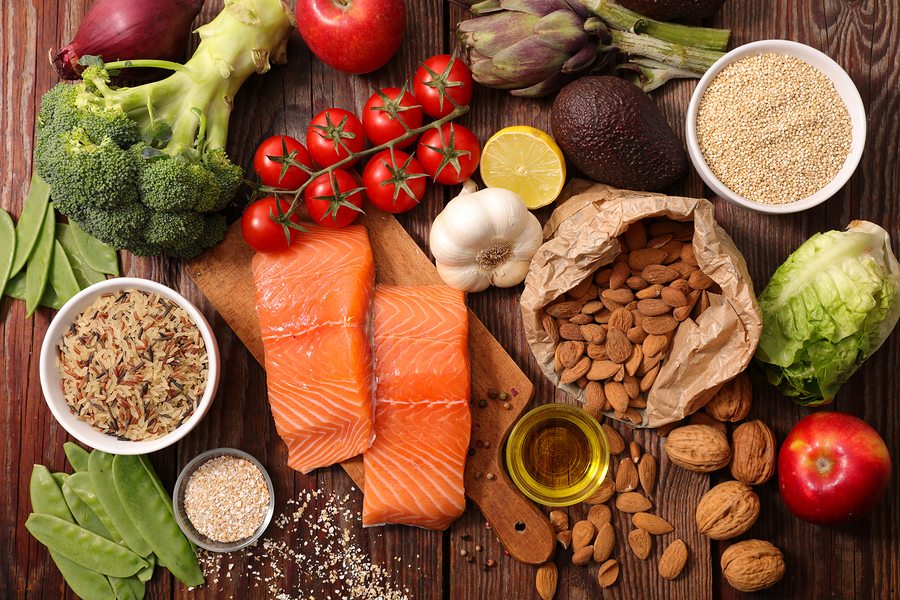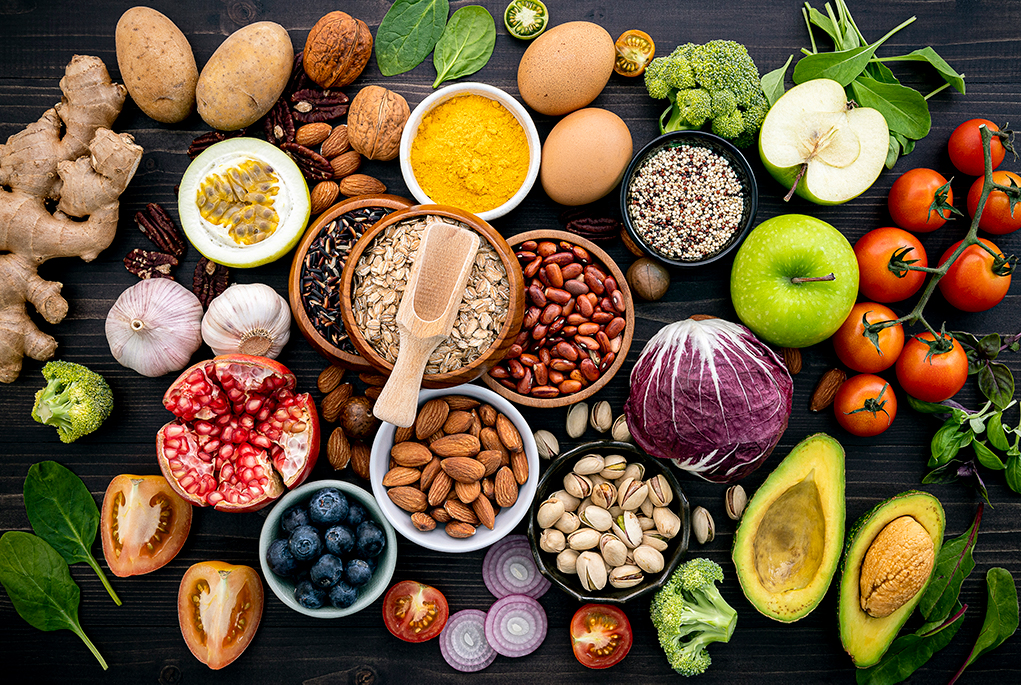
Eating a diet high in fruits and vegetables is a great way to reduce inflammation. You should eat at least nine servings of these foods each day. You should also eat fresh fruit, particularly those rich in antioxidants like strawberries. Whole grains are necessary, but only consume rice noodles a couple times per week. Baking flour should be avoided as it does not provide anti-inflammatory benefits. These foods can help you feel more active and prevent inflammation.
When choosing a diet that promotes good health, try to eat a diet rich in green leafy vegetables. This will boost the intake of omega-3 fatty acids and help fight inflammation. Organic meat and dairy products are also options. Also, consider omega flax oil and fish oil for dietary fats. For hydration, make sure to drink eight glasses of water every day.
Inflammation can also be controlled by eating whole foods. Consume foods without added sugar. Fruits and veggies are the best choices. A healthy diet includes low-fat dairy products as well as nuts, seeds, olive oil, and peanut butter. You can add flavor to your food with herbs and spices. Your body may be less reactive if you add vitamin E or antioxidants to your food.

There is no cure for inflammation. However, there are things you can do to lower your chances of developing it. A healthy diet should contain plenty of fresh fruits & vegetables. You should also avoid processed foods, sugary foods, and other junk foods. It is also important to include some fatty fish and coconut oil in your diet. You'll be healthier, and less susceptible to inflammation, if you eat these foods. EverlyWell offers a vitamin D and high-sensitivity CRP test kit that will help you include more anti-inflammatory foods into your diet.
Although there are not many scientific studies to support this assertion, there is evidence that inflammation can be reduced in many cases. It can prevent chronic diseases such as heart disease and cancer. Inflammation is an inherent part of our bodies. It is a natural, healthy response that protects us against harm. It is possible to reduce inflammation by changing how you eat. This article will help you reduce your risk of developing chronic illnesses.
Your health depends on the foods you choose to eat. Quercetin, which inhibits the production histamines, is found in onions. Anthocyanins in berry products can reduce inflammation. Although this isn’t an anti-inflammatory diet you can still choose foods high-in flavones and anti-inflammatory compounds. A variety of whole grains as well as berries should be included in your diet.
There are many causes of inflammation. Chronic inflammation is caused by many factors including excess weight, poor sleep and pollution. Your risk of chronic inflammation will be lower if you eat a healthy balanced diet rich in water and anti-inflammatory nutrients. It is essential to eat a healthy diet in order to keep your body balanced. Include anti-inflammatory food in your diet to keep your body in a normal state.

Inflammation can happen in many parts of your body. If your body is not used to inflammation, it can contribute to chronic pain, ear infections, and even cancer. Eat foods rich in polyphenols such as blueberries or leafy greens to reduce inflammation. These compounds are also found in coffee which may protect your body from inflammation. Your diet can be improved by getting enough sleep and eating a healthy diet.
Your diet is a major factor in chronic inflammation. Chronic health problems are common in many people due to poor diet. Inflammation is a normal response to injury. However, it can also cause a variety of health problems. Refined carbohydrates, for example, can increase inflammation. Sugary drinks, for example, can be detrimental to your health. They can cause fatigue, joint pain, and other symptoms. They can also contribute to the development and progression of cardiovascular diseases and cancer.
FAQ
How do I get enough vitamins?
You can get most of the daily nutrients you need through your diet. However, if you are deficient in any particular vitamin, taking supplements can help. Multivitamin supplements can be taken that contain all the vitamins you need. You can also buy individual vitamins at your local pharmacy.
If you are concerned about getting enough nutrients, talk to your doctor about what foods contain the best sources of vitamins. Some examples of rich sources of vitamins E and K include dark green leafy vegetables, such as spinach.
Ask your doctor if you're not sure how many vitamins you should take. Based on your medical history, and your current health status, your doctor will recommend the right dosage.
Does being cold give you a weak immune system?
Cold can make you less immune to infection because your body makes fewer white blood cells, which are essential for fighting infections. Being cold can make you feel more comfortable because your brain releases endorphins which help reduce pain.
Here are 7 ways to live a healthy lifestyle.
-
Make sure you eat right
-
Exercise regularly
-
Good sleep
-
Drink lots of water
-
Get enough rest
-
Be happy
-
Smile often
Why does our weight change as we get older?
How can you find out if your weight has changed?
When there is more muscle mass than fat, weight loss can occur. This means that daily calories should be less than daily energy. Reduced activity is the leading cause of weight gain. You can also lose weight due to stress, illness, pregnancy, hormonal imbalances and certain medications. If there is more body fat than muscle mass, then weight gain can occur. This happens when people consume more calories than they burn during the day. Overeating, increased physical activity and hormonal changes are all common reasons.
The primary reason we lose weight is that we consume less calories than what we burn. Regular exercise increases metabolism, which means that we burn more calories per day. This doesn't necessarily mean we will lose weight. What matters is whether we are losing fat or building muscle. If we're burning more calories than we're consuming then we're going to lose weight. However, if we consume more calories than we burn, we end up storing them as extra fat.
As we age, our ability to move around is slower and we are less mobile. We also tend to eat less food than we did when we were younger. As a result, we gain weight. On the flip side, we tend to have more muscle mass so we look bigger than we really are.
It's not possible to measure how much weight your body has lost without weighing yourself every week. There are many ways to determine your weight. There are many ways to measure your weight. You can check your waist, hips, thighs, arms and legs. Some prefer to use the bathroom scales, others prefer to use tape measures.
You can track your progress by weighing yourself at least once per week and measuring your waistline every month. You can also take photographs of yourself every few years to track how far your progress has been.
You can also check your height online to find out how many pounds you have. If you're 5'10' tall and weigh 180lbs, you'd likely weigh 180lbs.
Statistics
- WHO recommends consuming less than 5% of total energy intake for additional health benefits. (who.int)
- According to the Physical Activity Guidelines for Americans, we should strive for at least 150 minutes of moderate intensity activity each week (54Trusted Source Smoking, harmful use of drugs, and alcohol abuse can all seriously negatively affect your health. (healthline.com)
- nutrients.[17]X Research sourceWhole grains to try include: 100% whole wheat pasta and bread, brown rice, whole grain oats, farro, millet, quinoa, and barley. (wikihow.com)
- In both adults and children, the intake of free sugars should be reduced to less than 10% of total energy intake. (who.int)
External Links
How To
What does the term "vitamins" mean?
Vitamins can be described as organic compounds found in food. Vitamins help us absorb nutrients from foods we eat. Vitamins are not made by the body, so they must be obtained through food.
There are two types if vitamins: water soluble, and fat soluble. Water soluble vitamins dissolve easily in water. These include vitamin C (thiamine), Vitamin B1 (riboflavin), Vitamin B2 (riboflavin), Vitamin B3 (niacin), Vitamin B6 (pyridoxine), Vitamin C, B1 (thiamine), Vitamin B2 (riboflavin), Vitamin B3 (niacin), and Vitamin B6 (pyridoxine). The liver and fatty tissues are home to fat-soluble vitamins. Some examples include vitamin D and E, K, A and beta carotene.
Vitamins can be classified by their biological activity. There are eight major types of vitamins:
-
A - vital for healthy growth.
-
C – essential for proper nerve function.
-
D - essential for healthy bones, teeth, and gums.
-
E - needed for good vision and reproduction.
-
K – Required for healthy nerves & muscles.
-
P - vital for building strong bones andteeth.
-
Q - Aids digestion and iron absorption
-
R - necessary for making red blood cells.
The recommended daily allowance (RDA), for vitamins, varies depending upon age, gender, or physical condition. The U.S. Food and Drug Administration sets RDA values.
For adults aged 19 and older, the RDA for vitamin B is 400 micrograms daily. For fetal development, pregnant women need 600 mg per day. Children ages 1-8 require 900 micrograms per day. Infants under one year of age require 700 micrograms per day, but this amount decreases to 500 micrograms per day between 9 months and 12 months of age.
Children aged 1-18 years need 800 micrograms daily, while children overweight require 1000 micrograms per days. Children who are severely obese or underweight will need 1200 micrograms each day.
2200 mg of vitamin A per day is required for children aged 4-8 who have been diagnosed by anemia.
Adults over 50 years of age need 2000 micrograms per day for general health. Breastfeeding or pregnant women require 3000 micrograms per daily due to higher nutrient demands.
Adults over 70 need 1500 micrograms daily, as they lose 10% of their muscle every ten years.
Women who are pregnant or nursing need more than the RDA. Pregnant and breastfeeding women require 4000 micrograms each day during pregnancy and 2500 Micrograms each day after delivery. Breastfeeding mothers need 5000 mg per day when breastmilk is being produced.